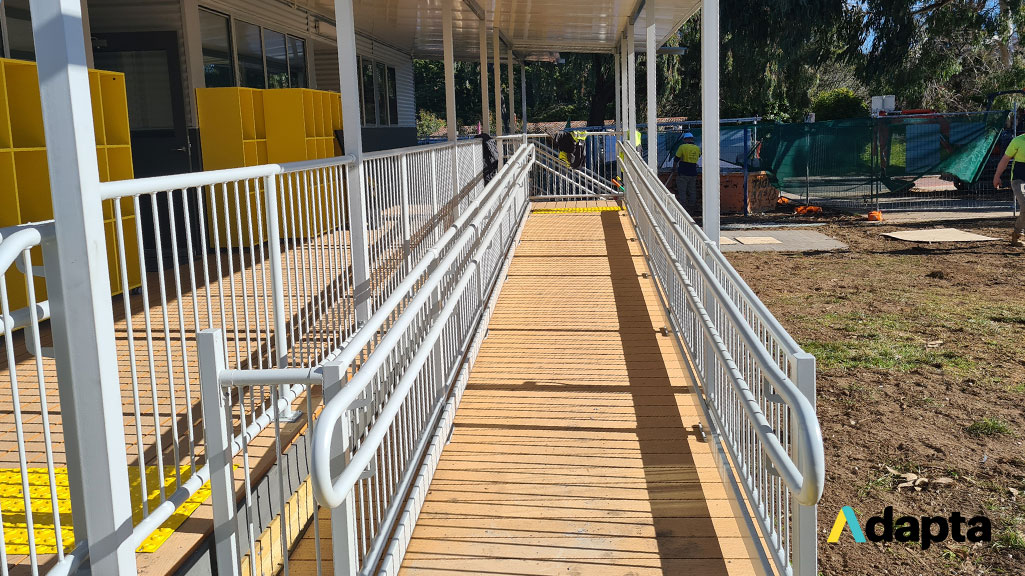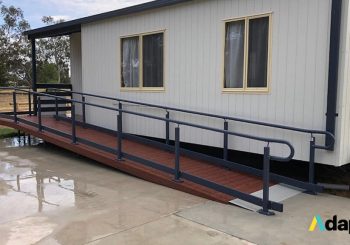In Australia, office buildings, commercial establishments, schools, and other structures that are open to the public are required to follow certain building regulations and requirements. These help ensure that these areas can be accessed by anyone regardless of their physical condition.
In other words, public buildings and places should have accessibility features, such as ramps for the elderly or individuals who have mobility issues.

In this article, we’ll discuss the important and required specifications of elderly ramps.
What is the DDA?
The Disability Discrimination Act was established to ensure that all public places in Australia are accessible to people with disabilities. It serves as one of the driving factors behind building codes related to accessibility ramps.
What is AS1428?
The codes that public buildings and properties must follow are referred to as the Australian Standards (AS). One of its provisions, known as AS1428, requires all buildings to adhere to the DDA’s regulations. It does so by providing a list of specifications that buildings should have, such as properly designed and constructed wheelchair ramps.
What are the Required Specifications of an Elderly Ramp?
According to AS1428, an accessibility ramp should have a certain length and slope. For instance, ramps that are 9 metres long should have a maximum gradient or slope of 1:14. On the other hand, a ramp with a length of 15 metres should have a gradient of about 1:20.
Ramps that exceed these gradient parameters should have landings in between their inclined portions. These ensure that individuals in wheelchairs or other mobility aids can easily and safely go up or down the ramps.
To fully comply with the DDA and AS, wheelchair ramps also need to have handrails. These additional safety features must extend from both ends of the ramp, and they should have circular or elliptical cross-sections with a height and width of 30 to 50 millimetres. They should also be about 865 to 1,000 millimetres from the surface of the ramp.

If you’re planning on installing handrails on both sides of a ramp, then the space between them should be at least 1,000 millimetres. This can ensure that the ramp has enough space to fit mobility aids such as scooters and wheelchairs.
Another safety feature that wheelchair ramps must have are non-slip surfaces. These are important especially for outdoor ramps that are exposed to the elements. Since rainwater, snow, and ice can accumulate on ramps, anti-slip features, such as textured surfaces, can help minimise the risk of accidents.
If you’re planning on installing a ramp on your property, make sure to get in touch with Adapta Ramps. As a professional and trusted builder of modular ramps, we’ll make sure to provide you with a durable accessibility ramp that complies with the latest DDA and AS regulations.
Contact us today and we’ll help you design the perfect ramp for your property.



